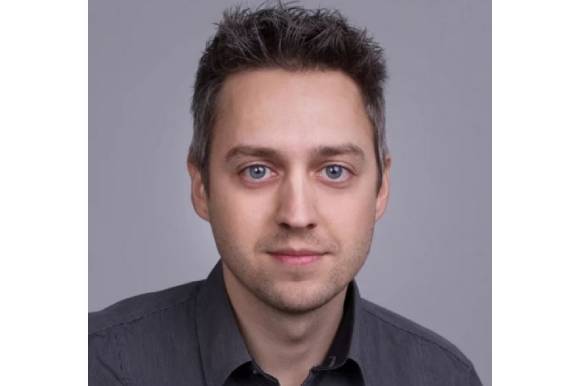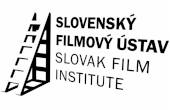For more than a decade Blue Faces has worked with leading VFX producers and supervisors around the globe. The Mill, M2 Film and MovieBrats are just a few of the top studios that rely on Blue Faces.
Central and Eastern Europe is one of the most important locations for global games developers and studios, and artists in the region are increasingly working for both film and games. FNE looks at how these two sectors of the entertainment industry are converging and why this trend is important for the future development of both.
FNE: When was Blue Faces founded and what have been your main missions and strategic projects so far?
Marek Jezo: Blue Faces was established in 2010 as a top-tier VFX studio providing Hollywood-quality visual effects and animation for films, commercials and the game industry.
We participated in more than 40 feature films and premium TV series. Later on, we extended our focus onto game development studios. The list of our top references consists of the most expensive Chinese film production Asura, the Atlantic Crossing TV series, Harry Potter, and the NBA 2K game.
FNE: What is the current situation in the Slovak gaming industry and what distinguishes it from the industry of other countries?
Marek Jezo: A lot of small indie studios are being established almost every month. The government in Slovakia supports game development mainly for small studios. These grants also contribute to the growth of the local game industry.
There is a lack of relevant local game publishers in Slovakia who would support game development. So most games in Slovakia are self-published or rely on foreign investors.
Work positions such as a game designer or programmer are hard to fill because of the lack of human resources. For the last 10 years, we have been trying to change this situation by creating school programmes. Private companies are also doing courses related to game development. Thanks to this initiative, the number of people working in the game industry in Slovakia has doubled in the last three years, but it is still not enough. There were around one thousand people working in the game industry in 2021.
FNE: Film and games converge is a hot topic now. Are there any companies in your association working across both and what are they working on? What can you tell us about the relationship between the gaming industry and the film in your experience?
Marek Jezo: Besides Blue Faces I know at least one other studio, Rembrosoft. They work on not only games, but also 3D CG work for commercials and films.
There are a lot of things in common when producing a game and producing an animated feature film. Some of these include 3D asset creation, animation, motion capture, scene design and 3D simulations. These kinds of services are very similar in both the game and film industries, and are usually outsourced to companies who specialise in these services.
FNE: What is interesting is that Blue Faces starts to use a games engine, in your case Unreal engine, which is primarily used for developing games, for visual effects works. What can you tell us about this and other technology you use?
Marek Jezo: Our pipeline was built on Maya. Complex scenes and big amount of assets pushed us to look for more reliable solutions. These days it's important to iterate quickly. Thanks to Unreal Engine we are able to light scenes and render images in almost real-time. This makes our customers happy because they can see a new iteration on the very next day and in some cases in just hours.
Unreal engine also supports Xsens motion capture and facial capture. This allows a real-time CG preview of the animation. This makes it so the director and client can see their final CG character immediately, and all of that in a 3D environment. Tweaks and fine-tuning can happen much faster.
FNE: Are there any Slovak films that are being turned into games or Slovak games that are being turned into films or TV series?
Marek Jezo: I know about none in the sphere of games or film.
FNE: Which Slovak games that you have worked on would you single out to have had international success?
Marek Jezo: The most successful games from Slovakia are produced by Pixel Federation. Games like Train Station or Diggy's Adventure have been actively played on Facebook by many players for decades and have reached global success. At Blue Faces our focus is on 3D games. Our top international reference is the game NBA 2K. We did the facial animations of basketball players. From a local Slovak perspective some well-known games we worked on were Shadows: Awakening and Die by the Blade. We created character animations and provided motion capture services for these Slovak games.
FNE: How much is the turnover and how much % of expected growth in the Slovak games industry? What can you tell us specifically about your company numbers?
Marek Jezo: The overall turnover in the Slovak Game industry for 2021 was about 85 m EUR. The turnover of the top 10% companies generated 86% of the total turnover. Compared to the year 2020 the turnover grew in 2021 by about 17%.
At Blue Faces specifically, we almost doubled our turnover last year and we continue to grow.
FNE: How do you see the development of the relationship between the film and gaming industries?
Marek Jezo: Besides entertainment, the main purpose of both film and games is to tell a story. Directors and game designers use the same tools, such as light, visual elements, sound and camera, to tell a story. At the moment, viewers of films are not able to influence the story as they would as a game player.
This might change in the future. Streaming platforms can gather a lot of information that cinemas can’t. They know what kind of films you watch, what parts of the film you skip, and what parts you re-watch several times. Today's technology even allows us to change the actor's face and what the actor is saying. This could be used for adjusting parts of the story and tailoring it for a specific target group.
In the future, AI and machine learning algorithms might be able to create several branches of the story. The viewer will be able to decide what will happen similarly as a player would in a game.





















